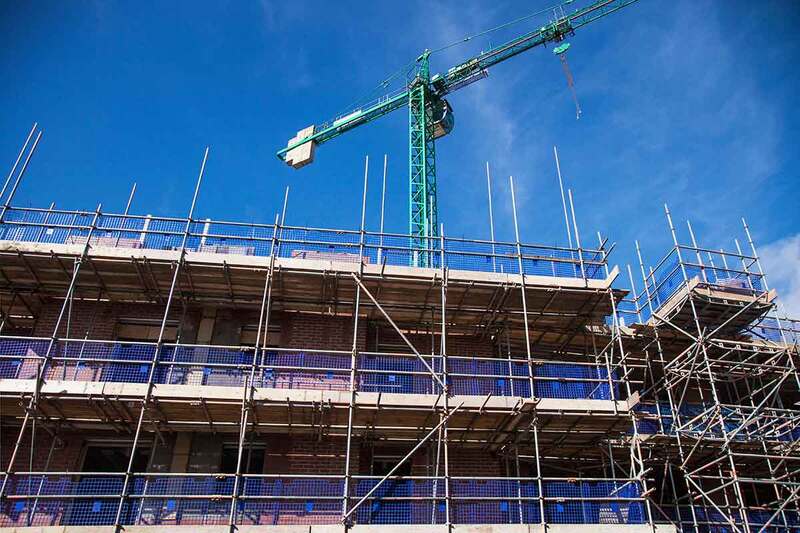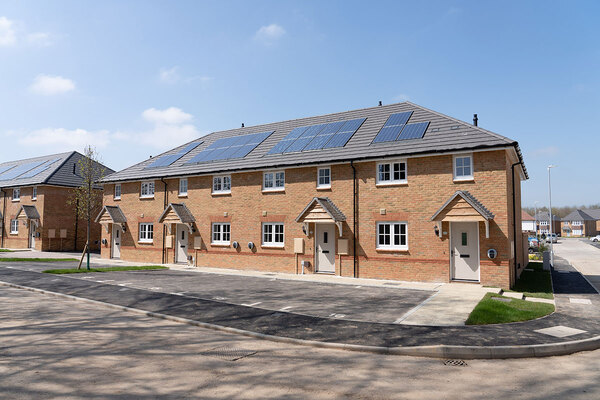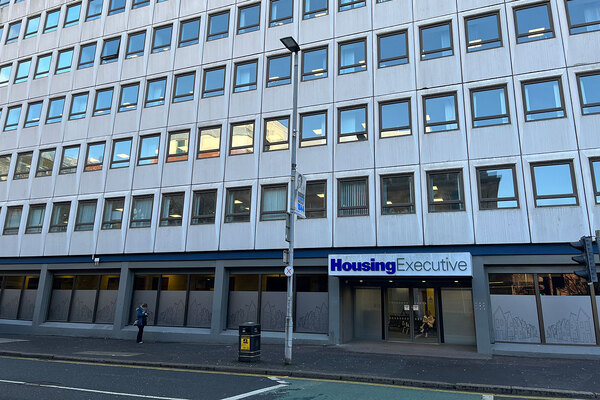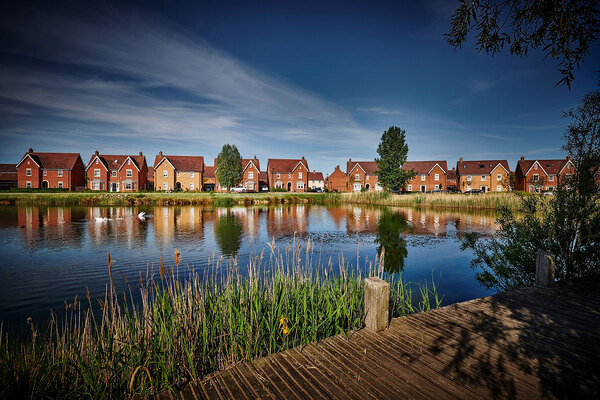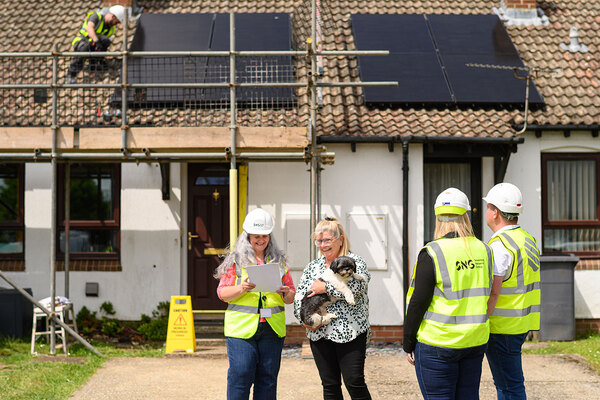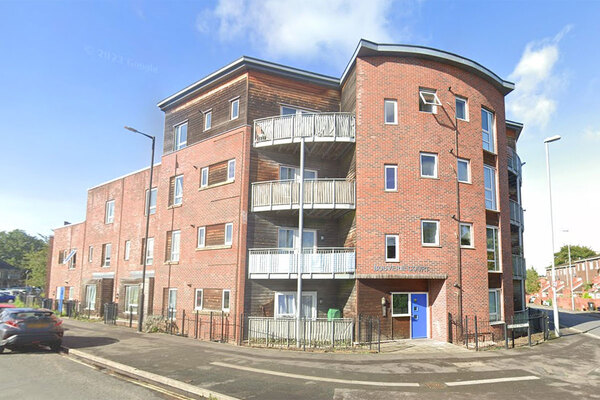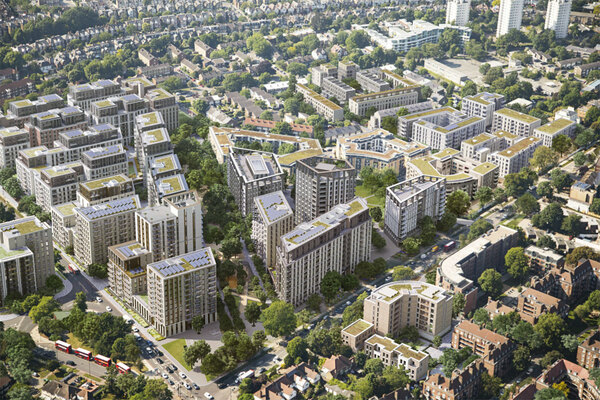You are viewing 1 of your 1 free articles
The sector agrees – the time for building is now
Vicky Savage, executive group director of development and sales at L&Q, shares her takeaways from the All-Party Parliamentary Group for London’s event on housebuilding
Last week I had the pleasure of addressing the All-Party Parliamentary Group for London on matters of housebuilding and the delivery of much-needed affordable homes in the capital.
I was armed with stats and case studies, but I found that all of us on the panel, whether we represented local authorities, housing associations (HAs) or the private sector, were already in agreement. While the government has identified planning as its initial top priority to encourage housebuilding and help reach its target for 1.5 million homes, we argued that it is not the sole answer.
We welcome more planners to ensure that the system is properly resourced. But there are serious questions about the sectors current financial capacity to build that need to be addressed, too.
The G15 has included these points in our response to the Spending Review consultation, which ended on Sunday. Without a 10-year rent settlement, rent convergence, innovative grants and equal access to the Building Safety Fund, we cannot start building at scale.
Housing associations play a crucial role in delivering affordable homes. In 2022-23, G15 members delivered 78% of all affordable housing in England, but in 2023-24 we reported a 76% decline on all new starts. Enabling HAs to develop does not just benefit the sector – it benefits everyone by addressing the critical shortage of housing and the social and economic benefits which come with this.
“Without a 10-year rent settlement, rent convergence, innovative grants and equal access to the Building Safety Fund, we cannot start building at scale”
We know how important social housing is for London. The G15 found that the capital’s social homes contribute nearly £7bn in social and economic value annually. Moreover, one in 10 Londoners lives in a G15 home.
However, to deliver more affordable homes, we first need to address the pressures on our finances associated with social rent, through a 10-year, cast-iron rent settlement and rent convergence. A fixed guarantee of the Consumer Price Index plus 1% would provide the certainty required for strategic planning, financial confidence and increased investment in new homes. It would also rebuild lender and investor trust.
On top of that, an extra £3 per week over the next 10 years would bring in £3.5 billion to the sector, which could be put towards the delivery of more new homes.
I was encouraged to hear my fellow panellist Jules Pipe, deputy London mayor for planning, regeneration and skills, emphasise the affordability of social housing. He admitted that no landlord in London would take on properties that only paid social rent, even if they were offered free of charge. The cost of servicing and maintaining those properties would far exceed the income. Yet, this is what HAs do: we provide an essential public service where the market cannot.
We also agreed that government funding should be restructured. Currently, only 12% of government spending on housing is used to build or improve homes, with the remainder used on benefits. This doesn’t even begin to cover our housebuilding costs.
When I started my career in housing three decades ago, roughly 90% of project finance was government grant. Now, only 12% of our costs are met through grants. We need higher grants per home and early payments to help get new projects off the ground. Additionally, a longer-term Affordable Homes Programme would unlock larger, more complex regeneration opportunities.
We can’t afford to stand still while the temporary accommodation crisis threatens the financial stability of our councils. As I heard from Grace Williams, leader of Waltham Forest Council, and as fellow G15 members know through our efforts on Project 123, London Councils are spending £4m every day on temporary accommodation. Not one new home is built with those funds.
“Currently, only 12% of government spending on housing is used to build or improve homes, with the remainder used on benefits. This doesn’t even begin to cover our housebuilding costs”
Only a robust and steady supply of new social homes can help change that.
Those of us in the room from both the not-for-profit and private sectors agreed on the need for robust building control approval processes. In fact, the G15 has pledged to spending almost £3.6bn on essential building safety works between 2021-2036. However, delays in approvals and regulatory uncertainty are putting significant pressure on housebuilding, particularly in London where high-rise buildings are common.
The impact is so severe that I was surprised to hear from development director Stevan Tennant that Ballymore usually one of the most prolific developers in London, currently has no projects on site. Instead, it has thousands of homes with planning permission, which are no longer viable or stuck awaiting approval by the regulator.
Other blocks remain empty for years waiting for a legal resolution because the Building Safety Fund is currently only available for leaseholders. If funding were extended to rented homes, HAs could move forward with safety works, while at the same time pursue the original builders and contractors and then repay the grant money upon resolution.
I’m hopeful that policymakers are finally giving more attention to housebuilding and affordable housing as top priorities. With the sector agreeing on both the challenges and potential solutions going forward, and with an ambitious government target of delivering 1.5 million homes in the next five year, the time for building is now.
Vicky Savage, executive group director of development and sales, L&Q
Sign up for our development and finance newsletter
Already have an account? Click here to manage your newsletters



